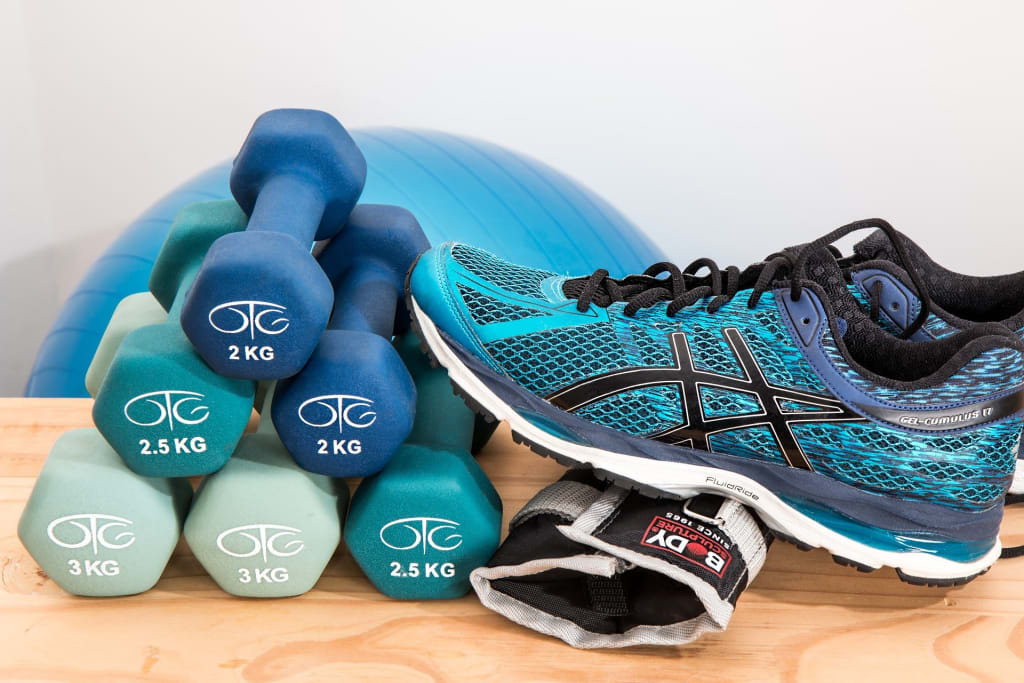Why You Must Accomplish All 3 Stages of Successful New Habit Creation
If a new habit doesn’t stick, it’s because you didn’t complete stage 3

Over 90% of people who make New Year’s Resolutions fail to keep them. Some statistics even say fewer than 5% of people keep their resolutions.
Those aren’t the only habits that people fail to change. Over 90% of smokers who try to quit fail to kick the habit. 95% of dieters fail to keep their weight off.
There’s one main reason people fail to successfully create new habits. This is also why they fail to replace old, unwanted habits with better ones. The reason is that they don’t have a plan. They rely on willpower. When that won’t do the trick, they give up.
Even those that successfully create new habits, often fail to make the habits stick. According to Hal Elrod in The Miracle Morning, that’s because there are three stages of habit creation. The third stage of identifying with the habit is often overlooked. You become a “jogger” or “morning person” or whatever other term you associate with your new habit.
In this article, I’ll show you what the three stages are. You’ll learn how to recognize them and how to accomplish them successfully. You’ll also learn how to overcome the specific issues each presents.
Phase 1: A fresh start
In this phase, you have just committed to your new habit. It’s new and exciting. It can also seem impossible. Your body and ingrained mental processes fight back against what you’re trying to do.
I vividly remember the first time I went on a low-carb diet. For the first two days, I thought I was going to die. My diet was pretty much all about the carbs — cereal, bread, pasta, pizza, soda. Basically, I ate the cheap and easy-to-prepare foods that most people fresh from college do. The switch from burning sugar to burning fat was excruciating. My body was convinced that I was starving. It tried sending every signal it could to get me to eat something starchy or sugary. If it hadn’t gotten better by day 3, I’d have quit.
Sometimes, the novelty of your new habit will help you through the first few days of your new habit. Then the rebound sets in. You enjoyed going to the gym and trying the different machines, but now every muscle in your body hurts. You had fun trying the first few recipes in your new diet cookbook. But now you’re craving the comfort food you know you can’t have.
The Phase 1 mistake most people make
The big issue for most people during Phase 1 is the Gambler’s Fallacy. This is the wrong belief that a streak of events is more likely than not. In other words, people assume how they feel when starting a new habit is how the habit always feels.
If they feel horrible, and like they’re going to die, they think they’ll feel like that the rest of their life. What sane and rational person would sign up for that? Of course they quit the habit.
But the truth is that Phase 1 is an adjustment phase. You’re asking something of your body or mind that it doesn’t want to do. There was a reason you weren’t already doing this thing. Your body and mind will double down and try to force you to admit the reason is a good one.
Don’t fall for this trick! Keep reminding yourself of the reason you wanted the new habit. And know that Phase 1 only lasts about 10 days. You’ve got the strength of character to make it for 10 days, don’t you?
After about 10 days, you’ll have convinced your body and mind to at least give the new habit a try. They will no longer be actively fighting you and sabotaging your efforts.
Phase 2: Continued discipline
The next phase is when you start thinking, “That’s not so bad.” You might even find some things about your new habit that you enjoy. You’ll start developing skills and competencies.
It’s important during this phase that you start thinking about your future. How will you eventually transition this to a lifetime habit? Now is when you can play around a little bit with your habit’s activation energy. (According to BJ Fogg’s Tiny Habits, this is how hard or easy any behavior is to start.)
If your goal is to go to the gym regularly, play around with ways to make that habit easier. If you get your gym bag ready the night before, does that help? If you sign up for a class or make an appointment with a personal trainer, does that help? Does going to the gym before work, during your lunch break, or after work make it easiest?
The phase 2 mistake most people make
The biggest mistake most people make during Phase 2 is mistaken competencies. They confuse their developing skills with mastery. They think they’ve got the new habit down, and don’t need to focus on doing it.
It’s important during this phase that you remain disciplined about your new habit. Do not allow any excuses to distract you. Continue to celebrate your achievements when you perform your habit.
This phase will also last for about 10 days. Write down your commitment to your new habit on your calendar or planner, and make sure to complete it. There are many habit tracking apps that will remind you of your commitments. Do not allow new crises or urgent projects to let you bump the habit.
Stay vigilant, and do not fall back into your old habits. You’re almost to the final phase!
Phase 3: Identification
Phase 3 is the magical time of transition. You go from someone who is “trying to do” something, to someone who “does” that something. It becomes part of your permanent identity.
You used to struggle against resistance to do your new habit. Now you look forward to doing it. You begin to feel proud of how far you’ve come, and all you’ve achieved.
You just need to make it through the approximately 10 days of Phase 3. That will firmly cement the habit in your personality. You’ll no longer associate your habit with a negative (I can’t eat carbs). Instead, you’ll associate your habit with a positive (I love how I feel when I eat vegetables and protein).
The Phase 3 mistake most people make
The biggest mistake most people make during Phase 3 is that they don’t do Phase 3.
There’s a dangerous myth circulating that it takes 21 days to form a new habit. The problem is that only considers how long it takes to wire the pathways in your brain to create the habit. What happens if you stop after 21 days? You won’t give yourself the positive feedback you need to identify the habit as part of your personality.
Instead, for the best chance of making the habit a lifelong one, commit to the full length of Phase 3. This is why 30-day challenges can be so powerful for starting new behaviors. If you commit to doing something every day for 30 days, you’ll have passed through all three phases.
At the end of that time, you’ll be able to think of yourself as someone who embodies the new habit. You’ll feel good about the habit. You’ve done it for long enough that you’re able to see the benefits. Those benefits silence the protests that your mind and body had at the beginning. Remember, when they were trying to insist on the benefits of your old behavior? These new benefits are clearly better than those old benefits.
Congratulations! You have a new habit.
Conclusion
There are three phases to creating a habit and making it stick. The first two phases create the habit. The third phase makes it stick.
The three phases are:
- A fresh start
- Continued discipline
- Identification
You need to complete all three phases, each of which lasts for about 10 days. That will firmly cement the new habit and its benefits in your life. You’ll enjoy the habit, and think of yourself as someone who does the habit.
This is why 30-day challenges can be useful for establishing new habits.
Ready to have a better tomorrow?
I’ve created a guide to help you increase your confidence and improve your life. If you follow these tips, you will level up your life very quickly!
About the Creator
Jennifer Dunne
Novelist turned blogger, sharing stories of hope, self-improvement, and productivity, as well as a bit of fantasy and whimsy. Visit me at: http://grftnd.jennifermdunne.com
Enjoyed the story? Support the Creator.
Subscribe for free to receive all their stories in your feed. You could also pledge your support or give them a one-off tip, letting them know you appreciate their work.






Comments
There are no comments for this story
Be the first to respond and start the conversation.